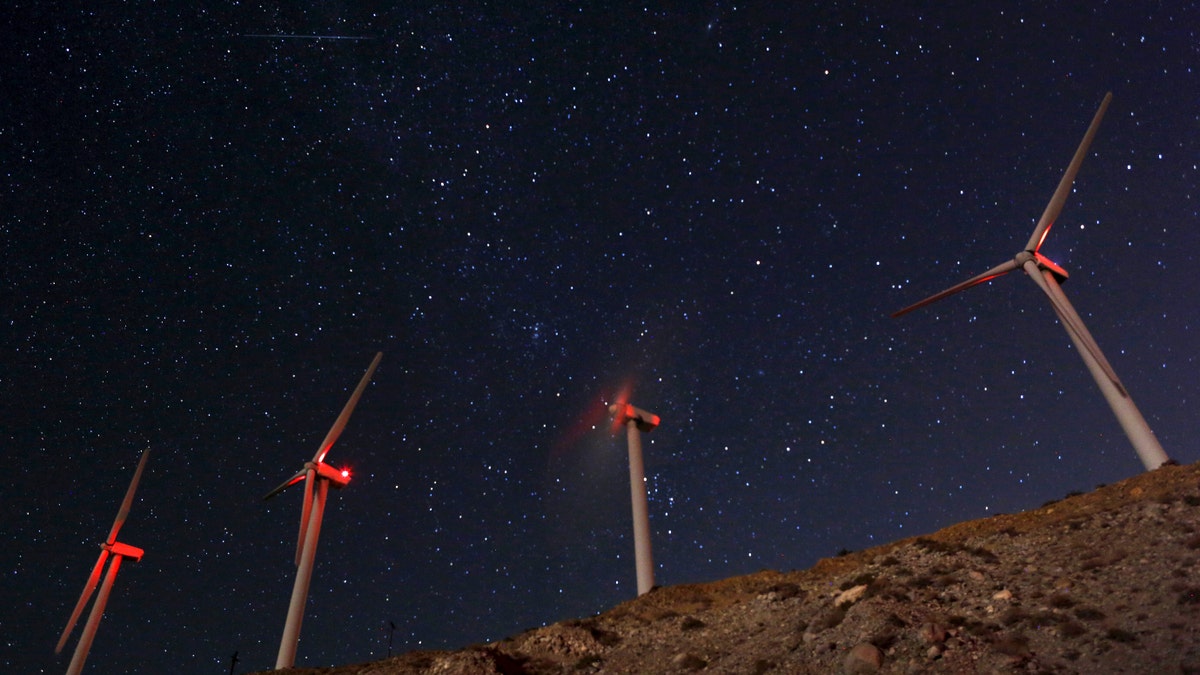
A meteor (top L) speeds past windmills at the San Gregornio Pass Wind Farm near Whitewater, Calif., Aug. 13, 2015 during the annual Perseid meteor shower. (REUTERS/Sam Mircovich)
Skygazers are in for another treat starting Thursday as the annual Taurid meteor shower reaches its peak.
This year the Taurids may be more active than usual, according to NASA, making bright “fireballs” more numerous in the night sky. The shower’s peak is expected to run Nov. 5 through Nov. 12.
Related: Supermoon lunar eclipse in pictures
The shower, or Taurid “swarm,” occurs when Earth passes through a broad stream of debris left by Comet Encke.
“Taurid meteors can be seen any time the constellation Taurus is above the horizon during the months of September, October, and November,” explained Bill Cooke, lead for the NASA Meteoroid Environments Office, in a recent blog post. “The best time to look for Taurids is after midnight, when Taurus is high in the sky, and when the sky is dark and clear, with no moonlight to mask the fainter meteors.”
Accuweather reports that the best time for viewing the meteor shower may be near the end of the shower's peak during the new moon. At that time, the sky will be darker, making the Taurids appear even brighter, it says.
Related: Stunning Perseid meteor shower pictures
Recent months have seen a number of significant celestial events, such as October’s Draconid meteor shower. Stargazers were also treated to a rare supermoon eclipse in September when a supermoon combined with a lunar eclipse for the first time since 1982.
In August, stargazers in the northern hemisphere enjoyed the oldest meteor shower known to Earth. The annual Perseid shower occurs when pieces of comet Swift-Tuttle hit Earth's atmosphere at more than 133,000 mph and burn up.




















